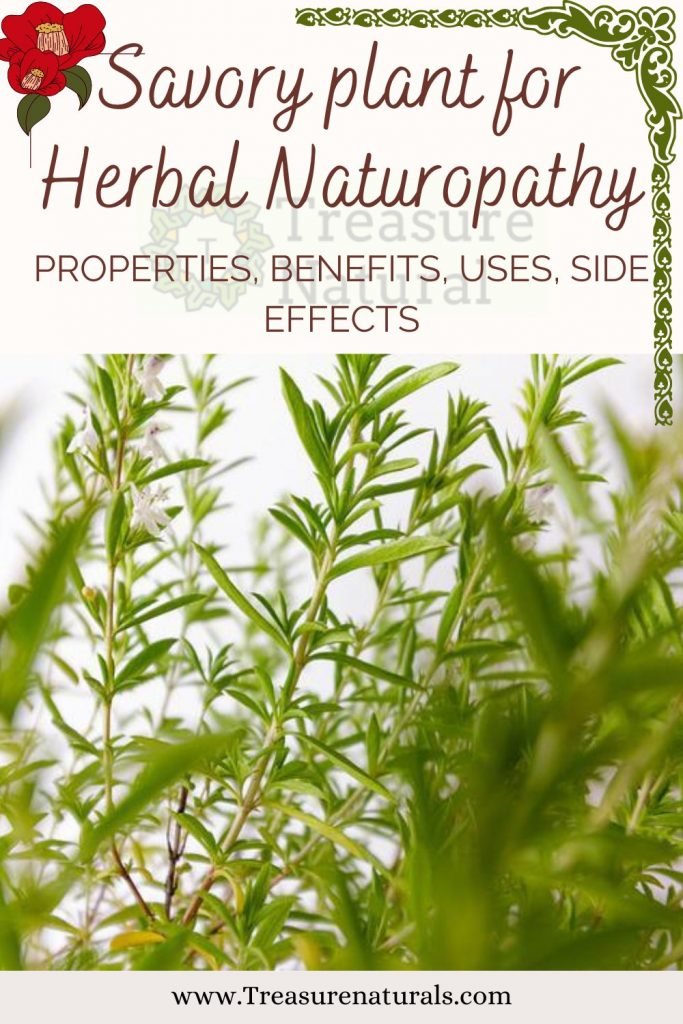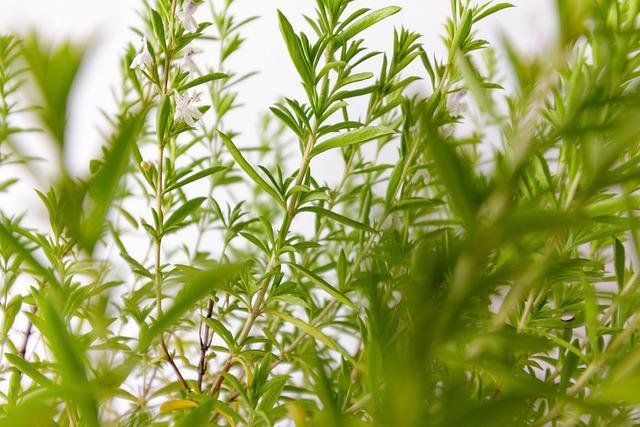
Savory is an aromatic and medicinal plant used in cooking and for health. Let’s find out its properties and benefits.
Savory is an aromatic plant that is used in cooking and herbal medicine, thanks to its properties and benefits.
What is savory
Savory (Satureja montana L.) is an aromatic plant that belongs to the Lmiaceae or Labiate family.
The leaves of the plant, in addition to being used in the kitchen as an aromatic herb, are used in herbal medicine for their medicinal properties.
The properties of savory are given by the presence of essential oil present to a greater extent in the leaves and in the flowering tops.
Properties of savory
Savory is used internally and externally for its properties:
- Flavorings;
- antibacterial;
- antifungal;
- digestive;
- cicatrizants;
- antispasmodic;
- astringent.
Traditionally, savory is also attributed with stimulating and aphrodisiac properties.
What is savory good for
In herbal medicine, savory is used above all to treat infectious diseases affecting the respiratory system and urinary tract.
Savory essential oil is particularly effective against genital and urinary infections , both for internal use and for local applications.
The preparations obtained from savory are therefore used in case of cough, cold, but also to fight infections from candida and other pathogenic fungi.
The properties of savory are also exploited to facilitate digestive processes and fight nausea, abdominal bloating, bloating and diarrhea.
Externally, the savory tea is useful for washing wounds, rinsing the mouth and gargling to disinfect the skin, mouth and throat and speed up tissue healing.
Also for external use, the infusion, the hydrolat and the diluted savory essential oil are used in the treatment of impure skin and in scalp problems including dandruff and oily hair.
As for the use of savory in cooking, the leaves of the plant are used to give flavor to sauces, sauces, soups and dishes based on legumes. Among the recipes with savory we also find waters flavored with fruit, vegetables and aromatic herbs.
How to use
Savory can be used in the form of infusion, essential oil, hydrosol and mother tincture.
Savory herbal tea is prepared with a teaspoon of dried leaves in boiling water; you can take two cups a day in case of cough, cold or digestive problems.
The hydrosol is taken at a dosage of one or two tablespoons a day, as it is or diluted in water and is especially indicated for digestive problems.
The essential oil is instead administered once or twice a day after meals by pouring a drop on a teaspoon of honey. It is taken in case of airway infections, urogenital infections or digestive problems.
The infusion and the hydrolate can also be used externally on the skin, mucous membranes and scalp; diluted essential oil (maximum 5 drops in a tablespoon of sunflower oil) is indicated for stimulating massages and to help clear the airways.
Savory mother tincture is administered one to three times a day by diluting 30 drops in a little water to facilitate digestive processes.
On the market you can also find savory honey which, thanks to its antiseptic, anti-inflammatory and antioxidant properties, is a valid remedy for coughs, colds and other flu symptoms.
Contraindications of savory
Savory has no particular contraindications or side effects when used in the kitchen or for therapeutic purposes at the recommended dosages.
The essential oil must not be applied pure and must not be used on mucous membranes or on damaged skin. The use of essential oil, both internal and external, is contraindicated in pregnancy, during lactation and in children.
How to collect savory
Savory leaves are used, which can be harvested all year round for use in the kitchen, by taking them from the stem individually or by cutting some twigs of the plant.
To prepare herbal teas, savory leaves can be harvested at the end of flowering, when they are rich in essential oil.
How to grow savory
The savory plant can be grown in pots or in the ground, for example in a flower bed in the garden or in the vegetable garden.
Generally, to grow savory, you start with a small plant that can be planted in spring or grown in a large pot outside.
Savory likes to stay in sunny places and in well-drained soils. If grown in pots, attention must be paid to stagnant water and it is necessary to provide nutrients throughout the spring and summer season.
In winter the savory can remain outside, possibly taking care to protect it with a cloth or placing it in a small greenhouse where temperatures often drop below zero.
However, it is a resistant plant with few needs, easy to grow even for those with little experience.
Difference between thyme and savory
Thyme (Thynus vulgaris) and savory are similar aromatic plants, both of the Lamiaceae family.
Compared to savory, thyme typically develops lower heights and produces smaller, less elongated, and dotted leaves. The flowers of the thyme have a slightly darker color than the savory, red-violet.
Description of the plant
The holygeggia is a suffrutice plant that can reach a height of about 50 centimeters by developing erect stems covered with a light down.
The leaves of the savory are opposite, devoid of small, elongated and leathery. When rubbed between your fingers, the leaves give off a pleasant scent.
The savory flowers are small and pink gathered in rounded inflorescences at the axil of the leaves.
After flowering, fruits develop, achenes containing the seeds.
In addition to the Satureja montana there are other varieties of savory including the Satureja hortensis, a plant similar to the montana but smaller and herbaceous.
Savory habitat
Wild savory grows and reproduces spontaneously, preferring calcareous soils and sunny areas in the mountains.
Background

The name of the savory comes from the Greek sàtyros (satyr) and refers to the aphrodisiac properties attributed to the plant by the ancient Greeks. It is also known as “satyr’s weed”.
According to tradition, satyrs – half man, half goat – lived in savory meadows and their insatiable sexual appetite was due to it.






